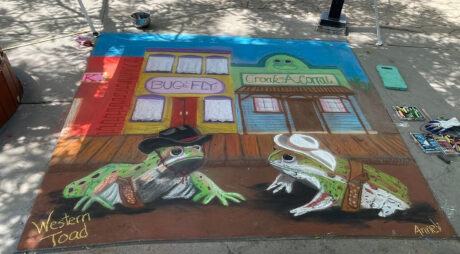Johnston: Old and new science learning

Photo supplied
Adam JohnstonI collect physics textbooks, a shelf of old, ragged books from a hundred years ago. It’s a thing. I like the thick, yellowed pages, occasional notes from some previous owner, the tactile cloth cover. But most of all, I like to look back on all that’s changed in both science and in teaching.
You can mine certain pieces of information in these books that tell you something about the front wave of science. Nuclear physics was new, almost speculative, at the beginning of the 20th century, and textbooks mentioned it mostly as a novelty. Similarly, most ideas around what we call “modern physics” (which is now well over 100 years old) were left out completely.
My 1922 copy of a high school physics book is compact, no fanfare and few photos and not a single color sketch. Instead, it has simple typesetting and a few diagrams of things like a crane, a steam engine and even a player piano. At first glance, I think of them as “hands on” kinds of examples, yet none of those things really allow your hands to be involved. Instead, the physics at the turn of the 20th century peel back layers of physical barriers to help people understand the guts of some mechanical wonders.
This isn’t a coincidence. That era was working with the first generation of students who would see school as a common good, something for all people for the betterment of the society. New wonders were coming into existence: autos, airplanes, major construction, assembly chains. Schools and their materials, where they weren’t concerned with arithmetic and reading, were exposing students to this new era. It’s also no coincidence that the compulsory school day would be paced by the ringing of bells, just as workers on new factory lines would be prompted to stop and start with the same ringing.
Textbooks of the mid-20th century have a different angle. There’s problem solving and laboratories and a clear directive to have calculations carried out and recorded in tables and on graphs. A lot of the same lab equipment I used in school and still see in lots of labs today were put into action at this time. In large part, this push to be like a research scientist or engineer was sparked by the space race and the advent of the Cold War. If the Soviet Union could launch a satellite, then we should do as much and more, and our science curriculum should get us there. It wasn’t just a matter of pride, but a sense that these technologies could lead to the defense of our country’s existence. NASA, the National Science Foundation and many national labs came about and flourished in the same era as these textbooks, alongside the advent of science fairs and similar competitions to discover and promote the “best and brightest.”
These are a part of our history, for better or worse, and that’s the reason I page through these old books. Yet today, a big effort in our science classrooms is to promote learning not simply through rocket propulsion. Science standards and curricula are based on research that shows we can reach more students in more meaningful ways if students start with phenomena that are applicable to them, questions that they can pose and contexts that are relevant to their own community. We need all kinds of people to know and do science, and so we need all kinds of different connections to welcome them and their creative ideas into the field.
This means that our kids’ science classes (as well as with so many other subjects) aren’t going to look like they did when I was a student. That’s uncomfortable sometimes, but I welcome it. Thinking back, I don’t remember too many people besides me being interested in rocketry or the mechanics of a player piano. But I can only imagine what kind of interest might be generated in students who realize their role in saving the Great Salt Lake, studying the decay of leaves in a backyard or figuring out how they can put their skateboard to use in the classroom. Just as science changes — that’s how we know it’s working — our system for teaching continually changes to meet the needs of our students and our ever-changing world. I wouldn’t want it any other way.
Adam Johnston is a professor of physics and director of the Center for Science and Mathematics Education at Weber State University, where he helps prepare future teachers and supports educators throughout Utah.



